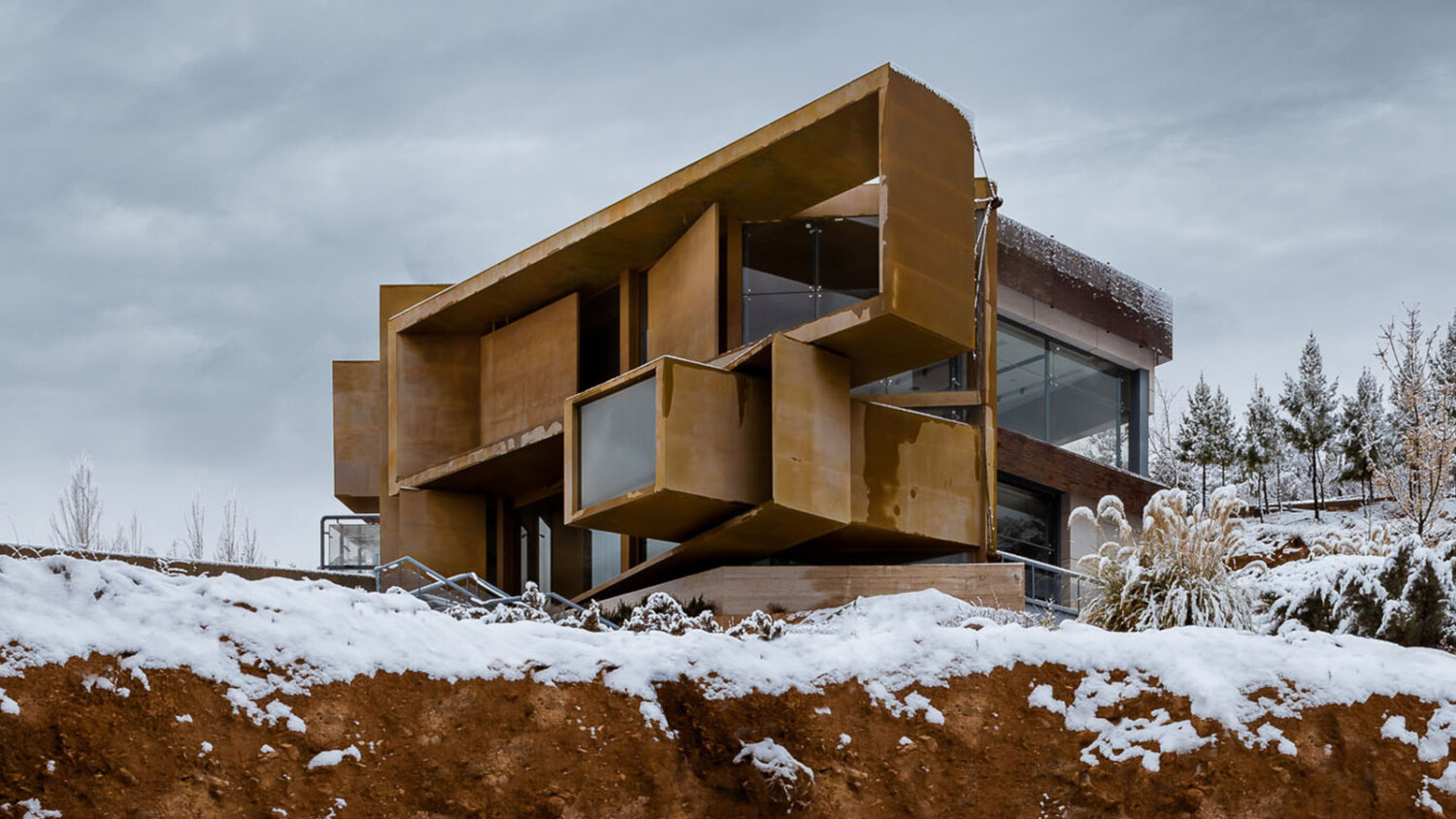Exploring Contemporary Iranian Architecture With Navid Atrvash
This week’s featured project takes us on an exciting trip to the city of Sadra in Fars, Iran! Here, we’ll check out the Green Land Convention Center’s Café Gallery by architect Mehrdad Iravanian and photographed by our new friend, architectural photographer Navid Atrvash.
Interestingly, for being in “The Cradle of Civilization,” Sadra is a fairly new city, and was established in the 1990s. The Green Land complex has been monumental in attracting folks to the area. Let’s check it out!
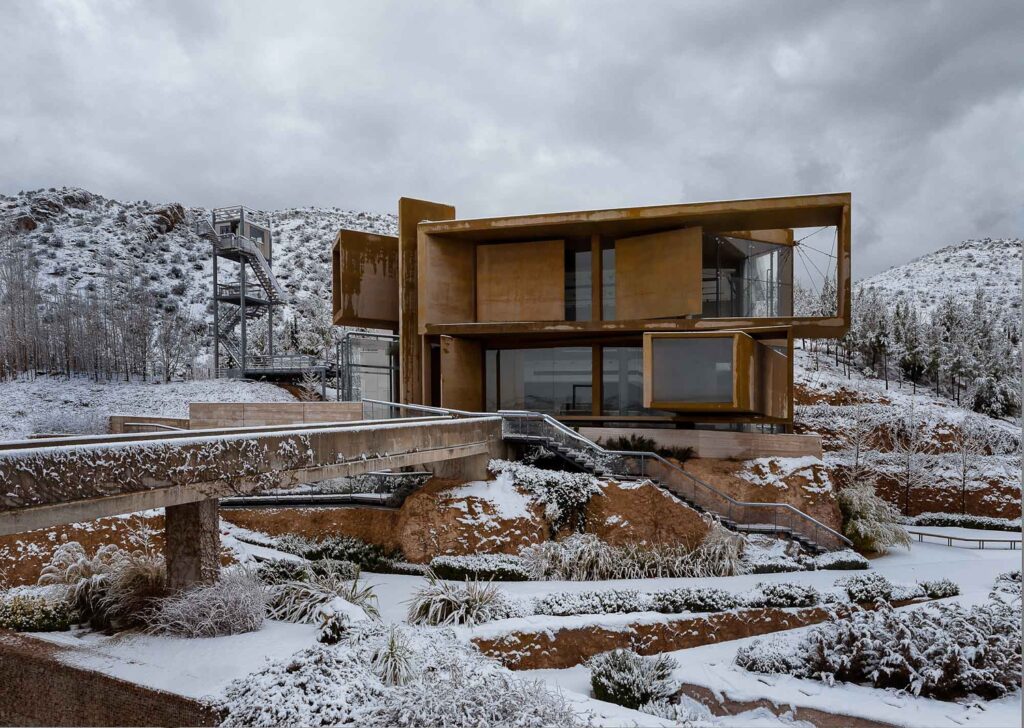
Navid explains “As an architectural photographer, my background has played a very important role in this job.
My parents are painters and artists, and from the age of 10, I was able to paint and interact with color and forms, and my interest in art led me to study architecture at University.
Through my lens, I often try to reflect the architect’s manifest with the help of photographic techniques, and after capturing the image, I try to retouch and edit the photos from a fine art perspective. The flow between being an architect, being a photographer, and being a digital artist is the most interesting part of my job.”
Just looking at these images, Navid’s compositions relay his attention to the geometric and graphic form of the café building. There are many strong and complex shapes at play here, and Navid’s perspectives highlight the three-dimensional aspects of this building nicely.
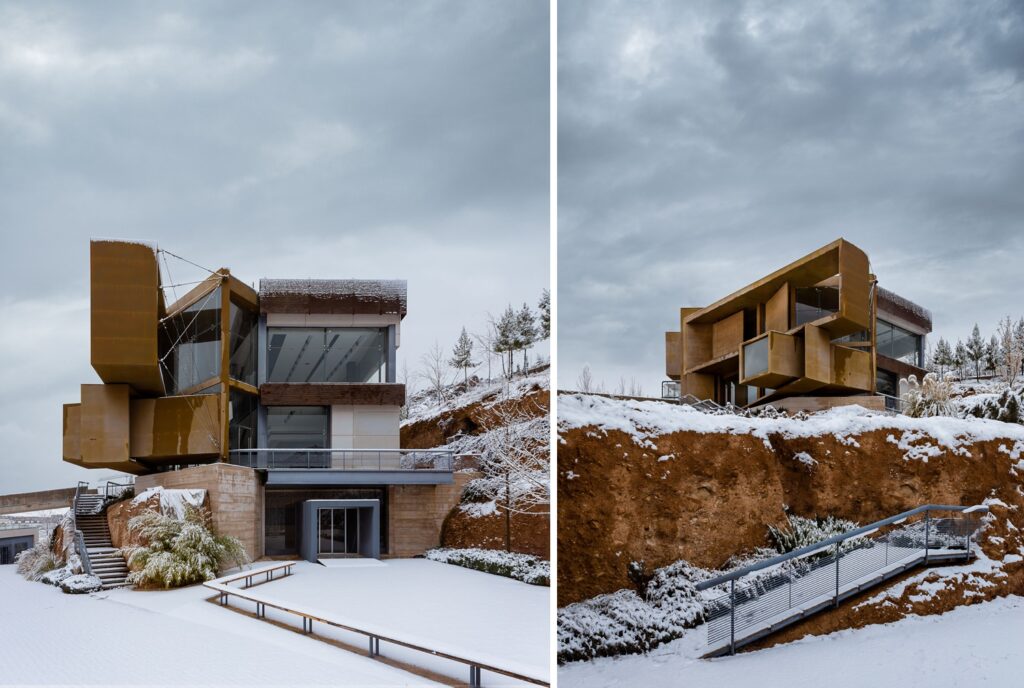
“I was hired by the architect to photograph [Green Land] in the middle of the fall, and started working on the project, which includes five separate buildings and an area of about 500,000 square meters.” Navid tells. “After a full photoshoot of the project and selecting the final photos for editing, in the early winter a beautiful snow began to fall in Shiraz, which only happens once or twice a year. I ended up re-photographing the café gallery. I think the materials and feelings of this project needed such an atmosphere to be able to present its true character to viewers.”
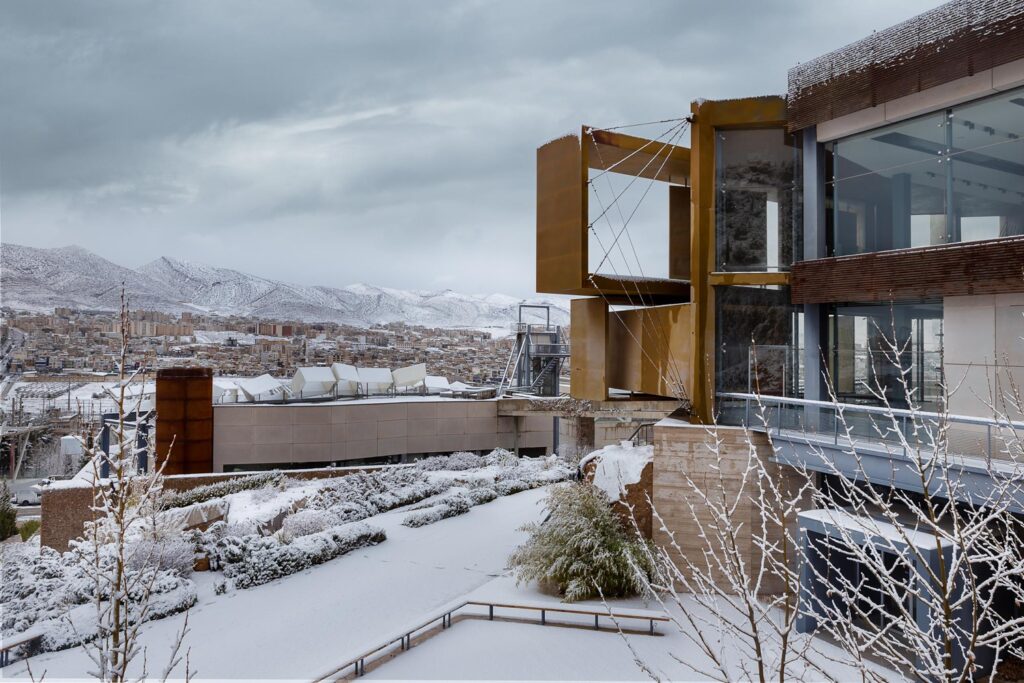
The way that Navid composes his photographs to show the contrast between Green Land’s bold, linear shapes, and those of the organic, flowing shapes of the surroundings, is very impactful. He also masterfully uses leading lines to pull our eyes in to the building, by means of the benches and bridges we find across this campus.
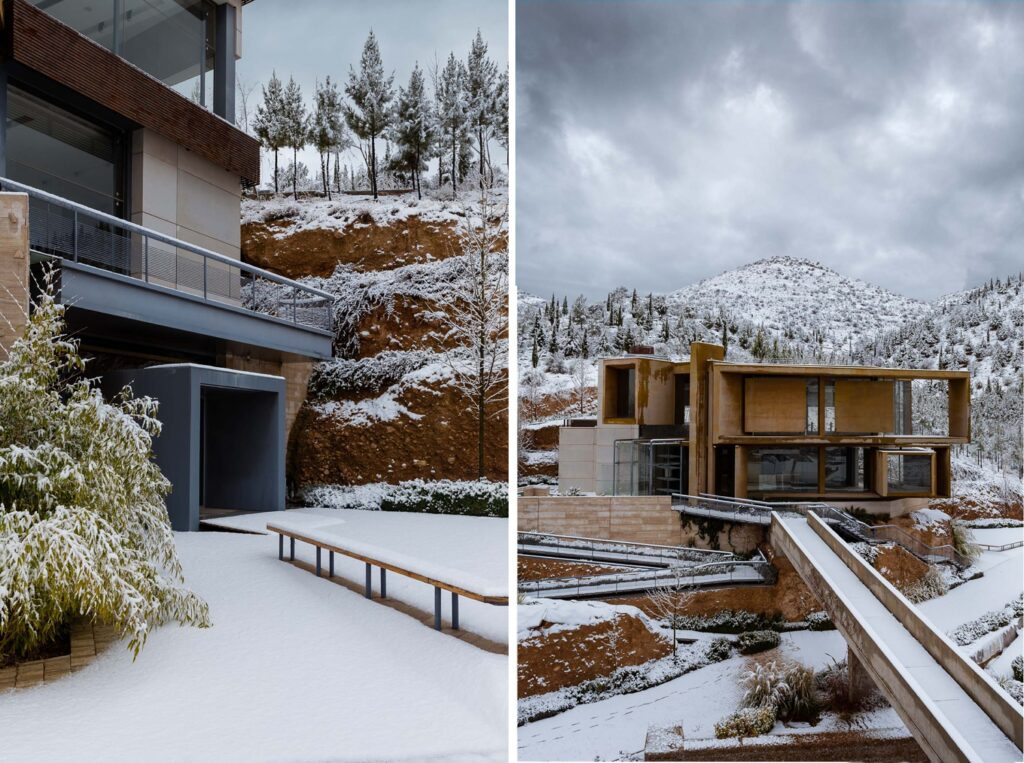
This is probably my favorite image from the entire series. Navid’s camera heigh feels perfect, as if we were standing on the bridge in person. The café gallery is perfectly framed by the rolling hills on either side of the frame. The walkway and the addition of those perfect footprints tractor-beams our eyes right in to the building while adding motion and rhythm to the frame.
Navid tells “On that snowy day, I had very little time to work because at any moment the weather could
change. With the arrival of the staff, the purity and simplicity of the space would disappear. Shooting in snowy conditions is not easy if you are going to climb the frozen ladders or snow-covered nature with all of your equipment on your back.”
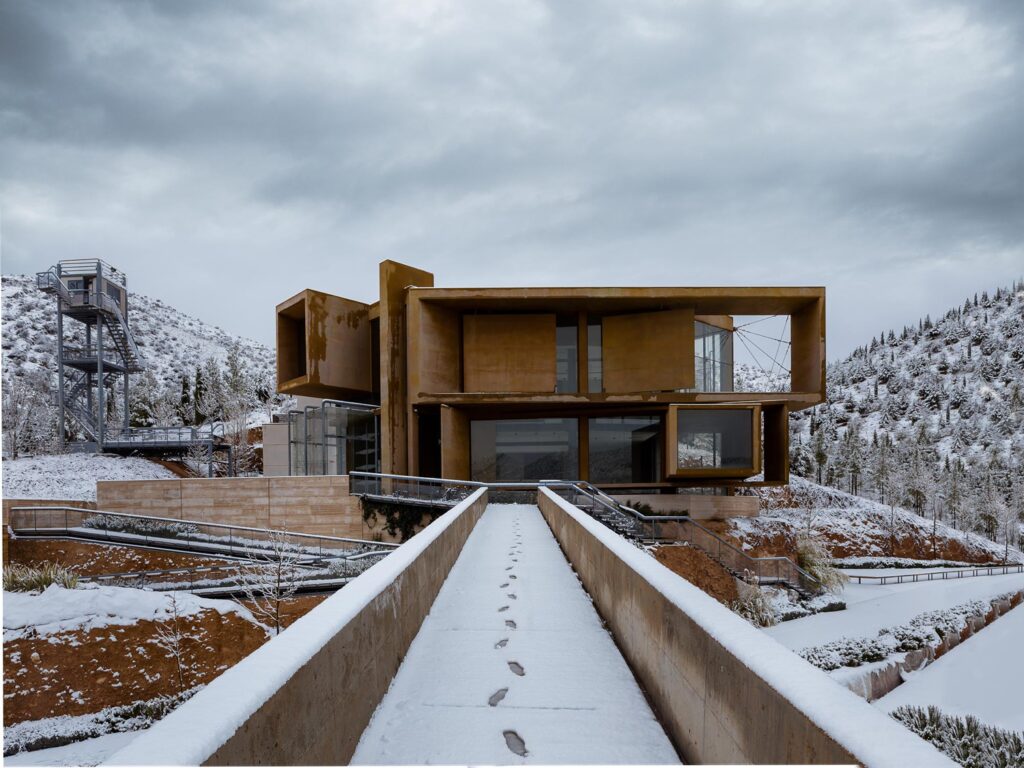
In his original snow-free images, we get a look at the inside of the building. The light and shadows present by the more dynamic sunlight help us understand the dimensionality and complexity of the different elements in the space. It’s so geometric and beautiful!
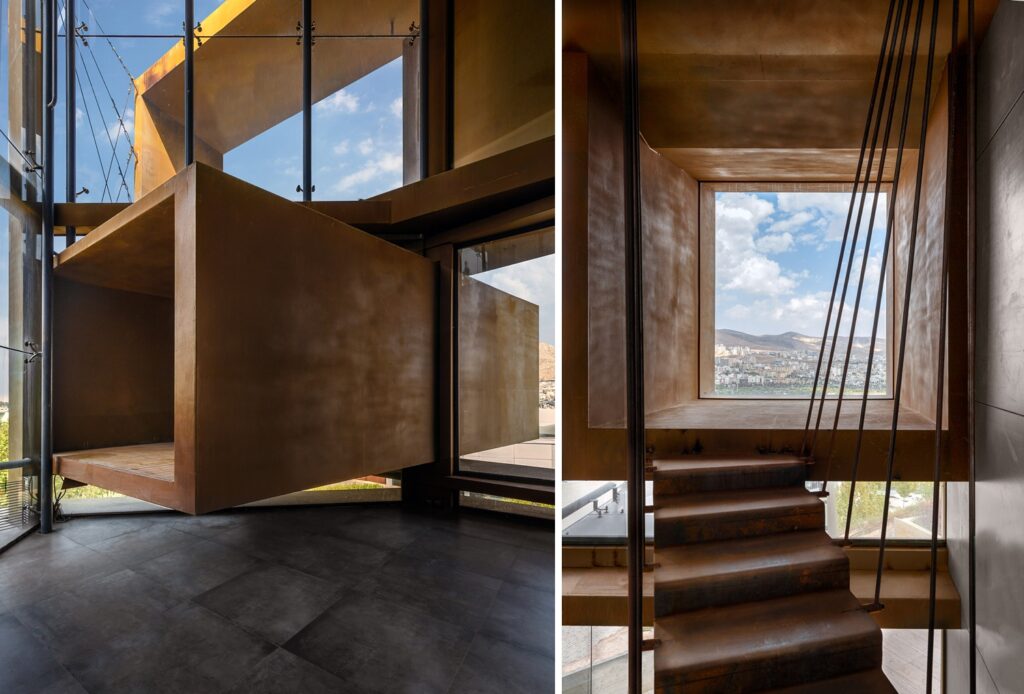
Navid leaves us with a great thought: “As Julius Schulman says, the concept of architectural photography does not form aphotographic expression, but it forms a design expression.
For this reason, the relationship between the photographer and the architect is very important and they must reach a common language before starting the work. For me, the architecture as the subject and the final image as an art are both equally important.
Architecture becomes a subject for the creation of an image, and photography is a tool for a better presentation of the architecture. That’s why the architect’s statement is so important at the starting point of a photography project. I think a photograph can be considered successful when it expresses the architect’s statement from the photographer’s point of view.
All in all, architectural photography is actually an artistic partnership between two artists with two different mediums. Architectural photography in special and unique projects like this moves on the narrow line
between photography and fine art.”

Thank you to Navid for submitting these photographs and sharing his expressions with us. You can learn more about Navid and see other gorgeous projects and examples of Iranian architecture via his website natrvash.com or on Instagram @natrvash.
If you have a project you’d like to be considered for Project of the Week, you can submit it here.
